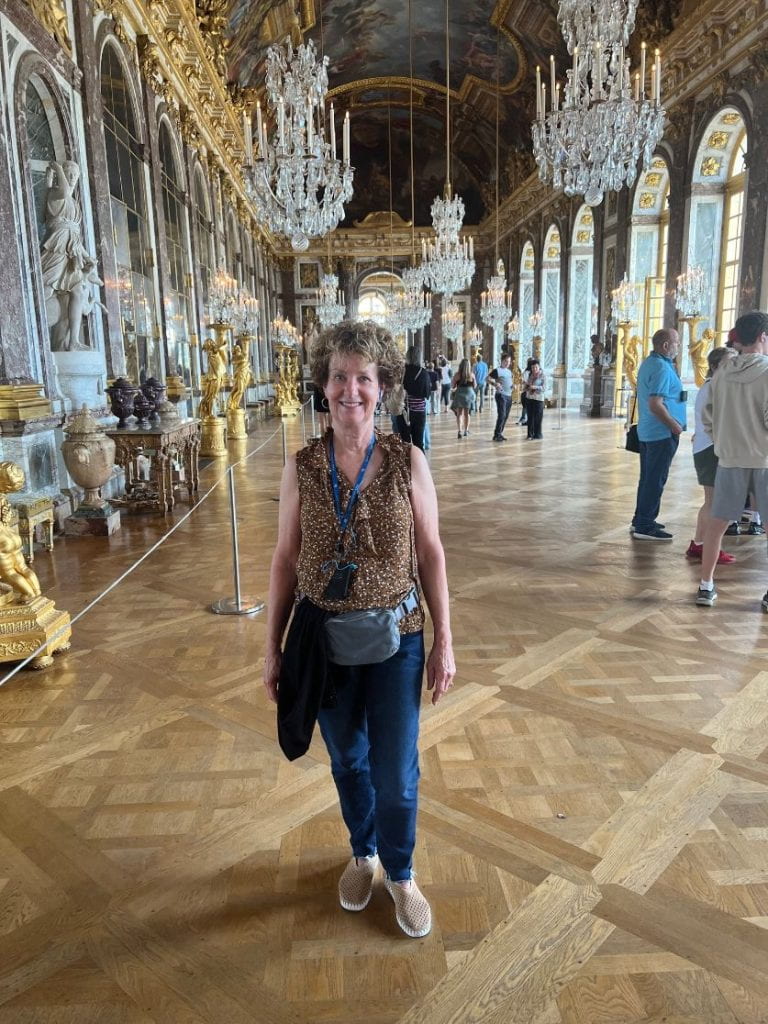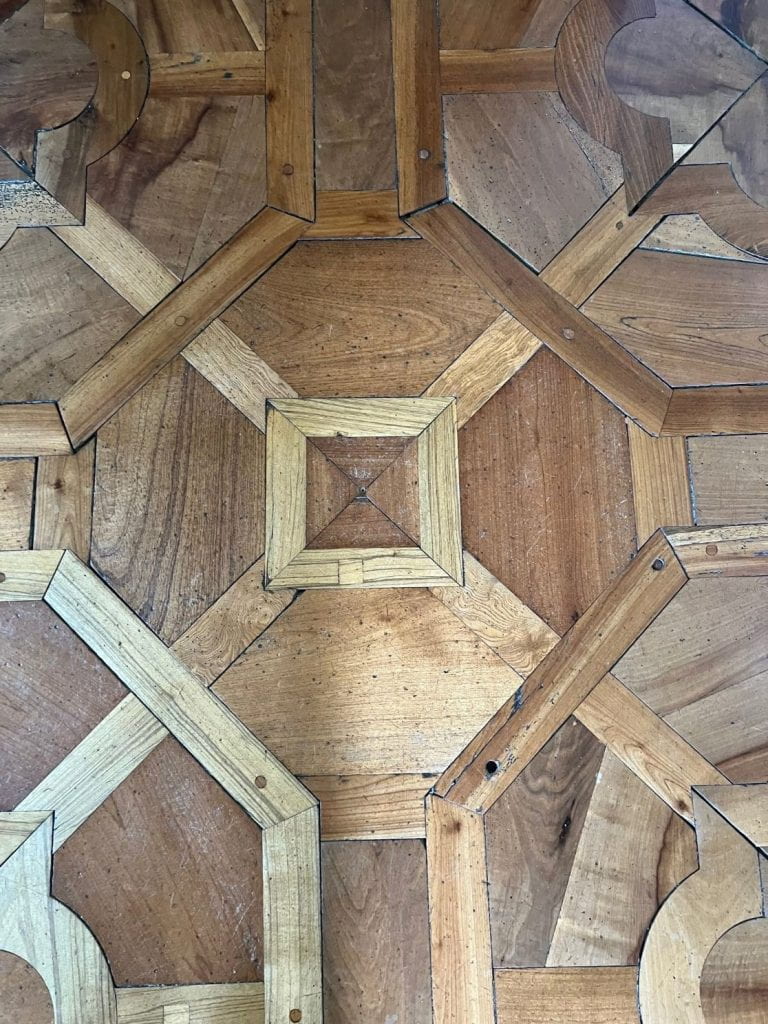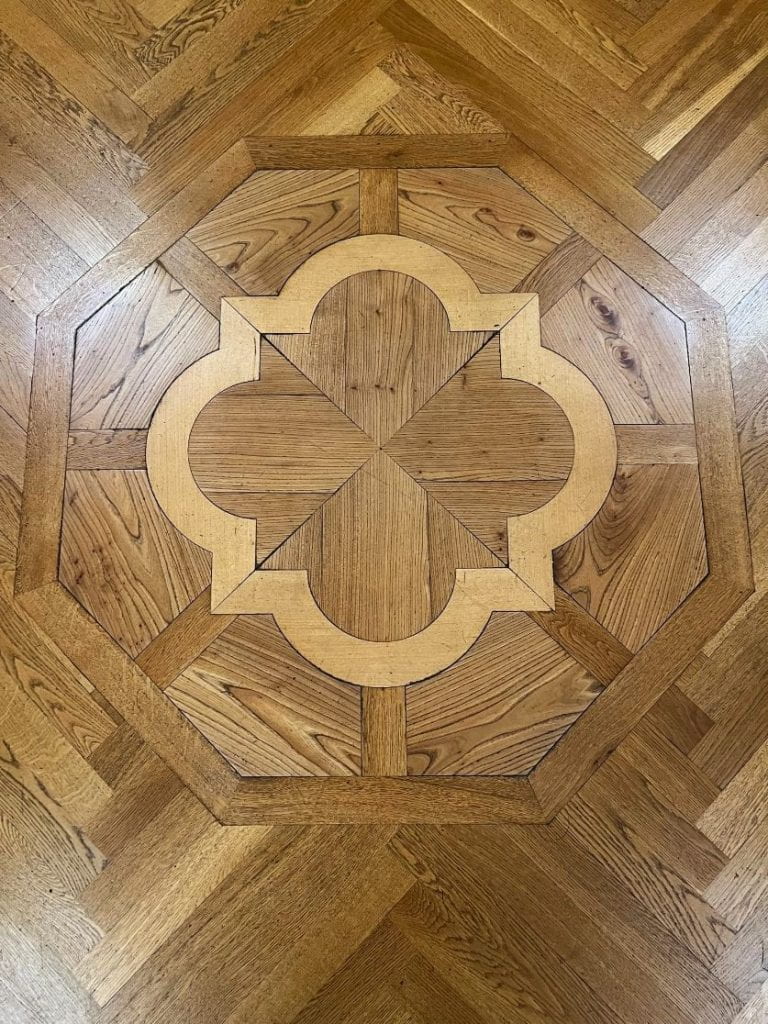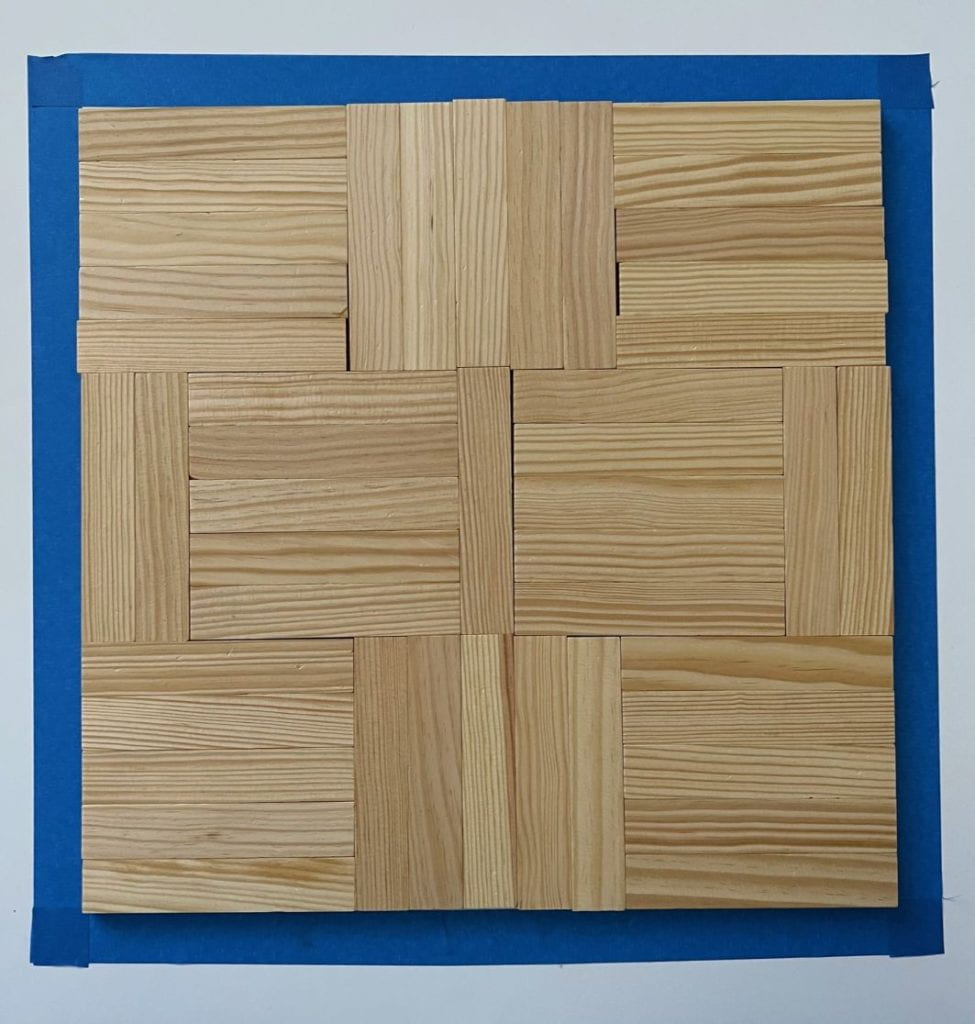Parquet
When we visited France, parquet floors covered the magnificent chateau rooms. Parquetry is created by using wooden slats in repeated geometric patterns. The first parquet floors were installed during the 17th century in the opulent Palace of Versailles. They were a sign of wealth and power, but this flooring was also functional and easier to maintain than marble floors. Artisans used lumber of contrasting colors and grains (oak, maple, walnut, cherry, mahogany, and pine). Go here and here to learn more about the history of this art form.
Use Parquetry to integrate engineering, art, math, and science in a meaningful and historic context. What an engaging way to incorporate angles, fractions, problem solving, and measurement!
Go here for an introductory video about angles.
Keva planks are a favorite building/engineering material of mine. Go to the official website here. Use painter’s tape to mark a square, and task students with creating a parquet floor in the provided space. Many school buildings have tiled floors, so students could cover a number of tiles to create a parquet floor. Teach and practice common patterns, such as basket weave or herringbone. As an alternative, students could use larger graph paper.

Basket Weave Design:
My original design: what should I name it?
Artisans who created parquet floors were knowledgeable of different types of wood and how they would respond to heat and moisture. Compare samples of wood here.





